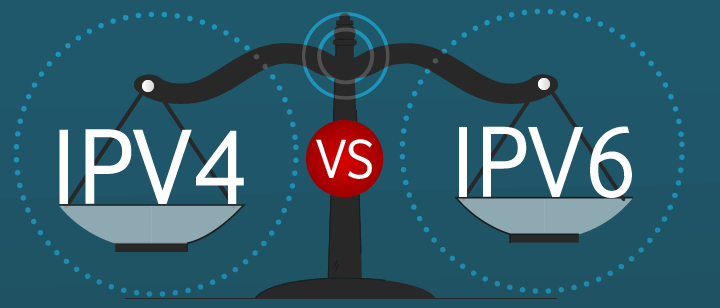Internet Protocol (IP) is the foundation of new communication in digital forms. It helps devices all over the world to define and share information easily with other members of the network. There are two generations of IP addressing, IPv6 and IPv4. With the approaching depletion of IPv4, the new IPv6 comes in with more opportunities, scalability, and security. This blog discusses the process of IPv6 and IPv4 transition. We have also mentioned the most significant issues of migrating between IPv6 and IPv4 and offer a solution to make the inevitable change in networking technology.
Understanding IPv6 and IPv4
What is IPv4?
The fourth version of IP is IPv4 (Internet Protocol version 4) and was introduced in 1983. It has a 32-bit address format, which means that it has a capacity of about 4.3 billion unique addresses. When you rent IPv4 address, know that it is best as the base of most Internet activities. It is old and its address space is in an exhausting state because of the globalization of the digital world and IoT development.
What is IPv6?
The developed version helps to address the limitation of IPv4 is IPv6 (Internet Protocol version 6). It has a 128-bit addressing scheme, which has virtually unlimited unique addresses. IPv6 is more efficient, auto-configuring as well as security-enhancing. It provides the ability to connect devices to the growing Internet of Things (IoT) ecosystem without problems.
Insights on Key Differences Between IPv6 and IPv4
1. Address Structure and Size
The IPv4 address format is 32 bits, which allows approximately 4 billion unique addresses. IPv6 extends this to a 128-bit system, which forms an almost inexhaustible number of addresses. Hence, this upgrade will meet the increasing demand for internet-connected gadgets in the world.
2. Configuration and Set-up
IPv4 can be configured manually or via DHCP to assign addresses. IPv6 makes this easier through automatic configuration, where devices connect automatically. This simplifies the process of network management and minimizes the time in configuration and maintenance.
3. Data Protection and Security
IPv6 has an in-built feature of IPsec, which provides integrity and privacy of data. Ipv4 for sale, in its turn, introduces security as an additional tier. Hence, this renders IPv6 a safer option for contemporary networks and delicate communications.
4. Network Performance and Efficiency
IPv6 eliminates Network Address Translation (NAT), which is prevalent in IPv4. There is a more direct and efficient flow of data without NAT. This results in more rapid communication and better performance between systems and online services.
5. Future Readiness and Global Adoption
IPv6 will satisfy the requirements of the future and connectivity, including smart gadgets and hi-tech solutions such as IoT. IPv4 continues to dominate most of the networks. Thus, the use of IPv6 is increasing as companies upgrade their infrastructure all over the world.
Significant Benefits of IPv4 Over IPv6 Addresses
In most businesses and operations, buying IPv4 space still has several significant advantages over IPv6. There is universal support and compatibility on all available network devices, servers, and applications. This guarantees ease of compatibility and reduced cost of set-up. It has a simpler structure, and its infrastructure has been well developed. This makes managing the network easier as well as foreseeable.
Small networks do not need the address space of IPv6; thus, the idea to lease IPv4 addresses is more efficient. Technical support and troubleshooting are cheaper and easier to access with a wide international adoption. In general, IPv4 is a stable, proven and viable option for numerous businesses. They are more conscious with performance, low cost and a reputation for a stable network.
Challenges of Transition from IPv6 to IPv4
Several challenges are visible with the transition of IPv4 to IPv6. The first is compatibility, as many older devices and systems continue to use IPv4, and thus complete integration may prove challenging. The network administrators generally face complexities in configuration and the unavailability of qualified personnel with experience in IPv6 implementation. Organizations can also have a high cost in upgrading hardware, software and security.
Second, there is the dual-stack (running IPv4 and IPv6 at once) operation that adds the workload and possible security risks to management. The lack of awareness and the uncertainty of returns on investment also slow down adoption. Above all, such issues complicate the process of transition and make it time-consuming and technically challenging for many businesses.
Following Best Practices for a Smooth Transition
Conduct Network Assessment
Start by doing a complete network audit to identify all the systems that are still using IPv4. Determine the significant dependencies, priorities in migration activities. Just avoid the failure of any critical service in the process of changing to IPv6.
Sharpen a Dual-Stack Strategy
Use a dual-stack method to implement IPv4 and IPv6 simultaneously in the transition. This approach guarantees that the service is not broken, and the testing, troubleshooting, and fine-tuning can be done in phases before full IPv6 rollout.
Update Network Devices
Introduce new routers, switches, and firewalls with complete IPv6 capabilities. Check firmware compatibility, enable IPv6 and confirm the security settings. This helps to prevent the disturbance of the migration stage.
Train IT Teams
Conduct practical training on IPv6 configuration, troubleshooting and security practice for IT teams. The development of valuable skills and confidence would support the smooth running and resolve of issues during the transition period.
Keep an Eye on Testing Regularly
Periodically perform testing to monitor the use of performance, connection, and security in both versions of IP. Constant monitoring allows us to identify problems in time. It also helps to stabilize network operations and ensure effective IPv6 implementation without failures in the services.
Future-Proof Your Network with IPV4 TradeHub!
Looking to buy, sell, or lease IPv4 addresses while preparing for IPv6 transition? IPV4 TradeHub offers secure, compliant, and hassle-free IP address solutions. Our experts simplify every step, ensuring seamless operations and full RIR compliance. Don’t let IPv4 scarcity limit your growth. Partner with us today to maximize your digital potential and provide a smooth, future-ready networking experience!
